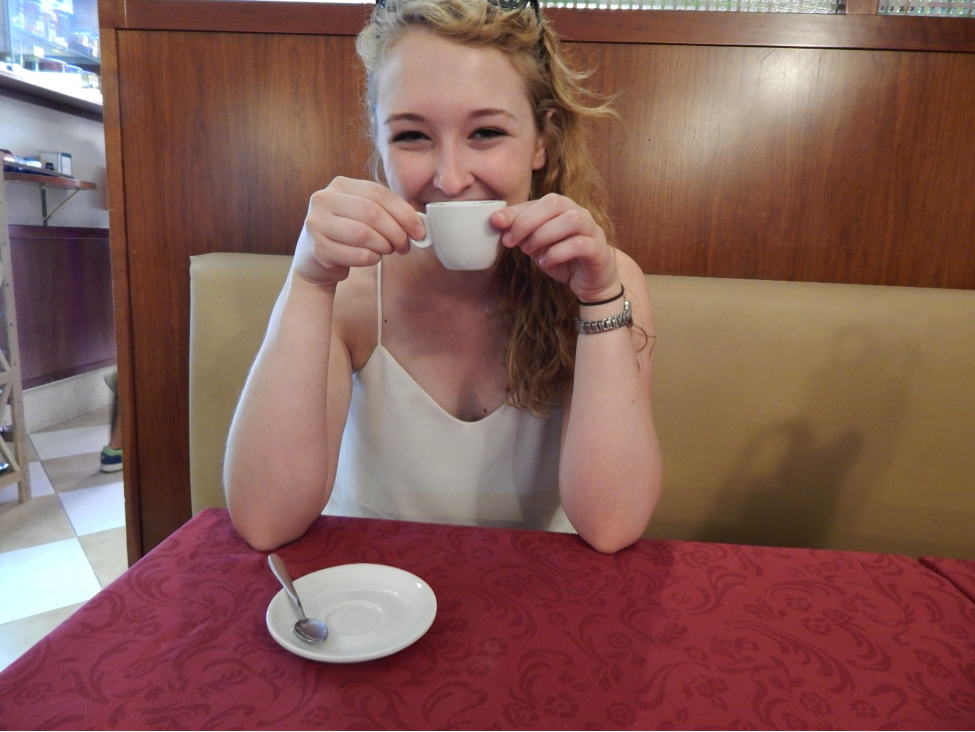By Emma Hollman
Emma Hollman was recently awarded the Goldwater Scholarship for her passion and dedication to electrochemistry research. Here Emma shares her research experiences at UT and abroad, including the role of faculty and the process that led her to her current research.
My first venture into research was during the spring semester of my freshman year. I worked in a materials science–type lab at UT Medical Center trying to develop scaffolds for tissue regeneration. My mentor was great, but I was the only student working in the lab. It wasn’t a good fit, so I decided to change course. I have had an interest in fuel cells since middle school, and a class with Dr. Riedinger my sophomore year renewed my interest. Dr. Riedinger was kind enough to introduce me to Dr. Zawodzinski, a Governor’s Chair in the Department of Chemical and Biomolecular Engineering. Dr. Z is extremely well known and respected for his work with fuel cells and now various battery technologies. I began working with Dr. Doug Aaron, a post-doc in the group at the time, on all vanadium redox flow batteries (VRBs). I continue to work on VRBs with Dr. Aaron today.
The vanadium redox battery is a rechargeable flow battery that operates using four different vanadium oxidation states separated into two half-cell reactions (i.e., two oxidation states operate as the cathode and two oxidation states operate as the anode). The active materials are vanadium dissolved in (traditionally) sulfuric acid, and this electrolyte is stored in tanks separate from the battery hardware and electrodes where charge and discharge reactions take place. Because the active materials are separated from the active site, the VRB is inherently safer than traditional batteries (think Duracells that you see in the store).
My first project was to measure the kinetic performance of VRBs as a function of state of charge. The project had a huge learning curve because I had essentially no background in electrochemistry in general or the lab equipment I used. Dr. Aaron was absolutely fantastic and answered every question I had about the project. Dr. Z was also very involved, monitoring my progress frequently. When I told him of my desire to apply for Goldwater, he was extremely supportive. He helped me design the project for my research proposal from the ground up, making sure that I fully understood the “big picture” implications of my project and spending many hours helping me edit and refine my proposal. Nichole Fazio-Veigel aided in the other parts of the application, and I am forever grateful for the assistance and encouragement she provided throughout the process. I’m not sure what I would have done without her. I was fortunate to be named a Goldwater Scholar, but I found the application process to be just as rewarding as the award itself. I learned how to frame a research proposal, how to swallow my pride when faced with a mountain of edits, and how to ask for recommendations.
I presented my first kinetics research at an Electrochemical Society meeting in Orlando, Florida, in May 2014. Presenting my research next to scientists many years my senior (I was in the general session rather than the student session) was extremely satisfying. I received much supportive feedback from professors and graduate students and learned firsthand the type of curveball questions that can be thrown at you.
Within a week of presenting at this conference, I left for Padua, Italy, where I spent the summer researching carbon electrode materials for VRBs. In Italy, I used Raman spectroscopy and FTIR spectroscopy to investigate the formation of vanadium species as a function of state of charge, both in bulk electrolyte and at the electrolyte-electrode interface. The information from this study is useful because knowing what species are formed aids in the design of electrodes. We hope to be able to design the surface chemistry of the electrodes to interact desirably with these species and promote more efficient battery operation.
Research abroad was a challenging but ultimately rewarding experience and an opportunity that I am thankful I received. I’ve continued this fall with the project I began in Italy this summer and am currently applying to graduate schools to pursue my PhD.


